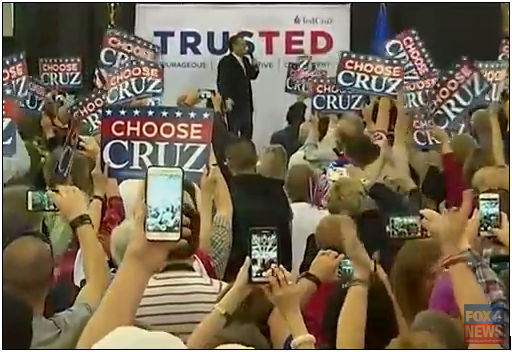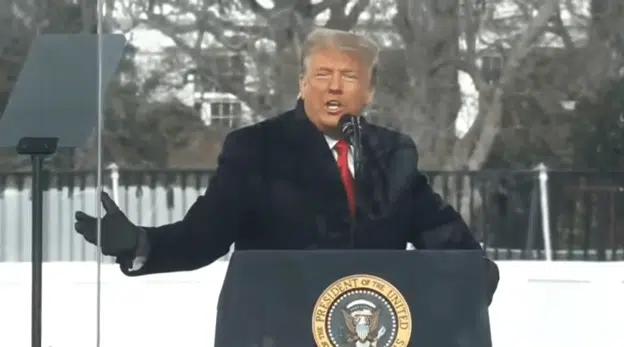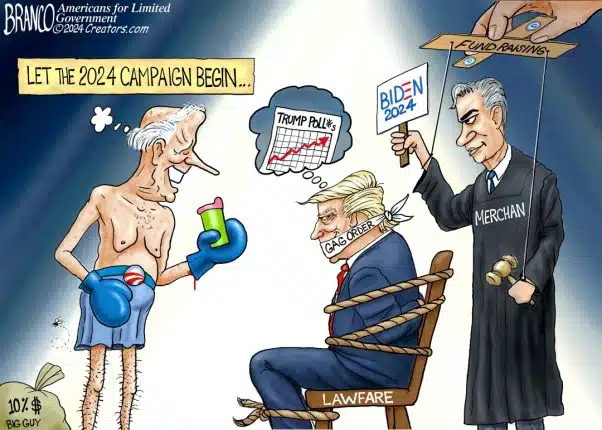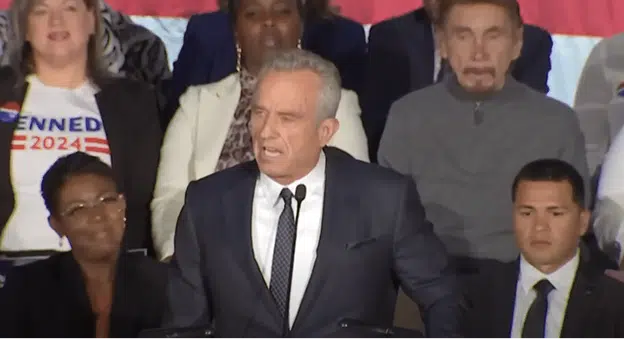If turnout on Super Tuesday was any indication, Republicans are highly motivated in this year’s presidential cycle.
8.9 million voters showed up to vote for Republican candidates Donald Trump, Ted Cruz, Marco Rubio and John Kasich, on Super Tuesday, compared with just 5.6 million for Democrats Hillary Clinton and Bernie Sanders.
In elections, turnout determines everything, and on Super Tuesday, Republicans easily won 59 percent of the popular vote. If it had been the general election, it would have been a rout of historic proportions.
So far, more than 9.4 million voters have turned out for Republicans this year, compared with just 6.5 million for Democrats, according to Real Clear Politics.
But does that mean Republicans are a sure thing in November?
Well, not so fast.
While some recent history indicates low turnout may not bode well for Democrats, it is not quite so simple. In recent years where the seat for President is open it is true the party that did better in the primaries won the general.
In 2008, Democrats Barack Obama and Hillary Clinton racked up 35 million votes in the primaries, compared with Republicans John McCain, Mike Huckabee, Mitt Romney and Ron Paul tallying 20 million votes. Democrats went on to win the White House.
In 2000, Republicans George W. Bush, John McCain and scored 19.1 million vote in the primaries, compared with Al Gore and Bill Bradley’s combined 13.9 million votes. Republicans went on to win the White House.
However, in 1988, Democrats including Michael Dukakis actually got more people to turn out — 22.7 million to just 11.7 million for the GOP — but they also had a far more competitive primary. George H.W. Bush ran away with the process after Super Tuesday, and Bob Dole, his top rival, dropped out after losing the March 15 primary in Illinois. So that might have had something to do with it.
Prior to that, the last time the White House seat was open without a sitting president running was 1968. Then, the nominating process was very much different, with far fewer primaries.
Still, based on its current pace, the Republican Party appears it will bring about 31 million to the polls in their primaries, a record for the GOP. That takes into account 9.4 million voting after 15 states, projecting how many would turn out after 50 states. Democrats appear on pace to turn out about 21 million.
Given that the length and type (open seat or incumbent president) of contests tends to vary so much, statisticians do not really rely on a turnout model in all of the primaries too much.
Others, such as Stony Brook University professor Helmut Norpoth, look at the strength of victories in early primary states to get a better reading of how things might go in November.
The so-called primary model accurately models the winner of the general election popular vote with few exceptions going back to 1912. “For elections from 1912 to 2012 the primary model picks the winner, albeit retroactively, every time except in 1960,” according to Primarymodel.com, Norpoth’s web site. That’s a 96 percent accuracy rate.
As far as methodology goes, Norpoth writes, “Winning the early primaries is a major key for electoral victory in November. Trump won the Republican primaries in both New Hampshire and the South Carolina while Hillary Clinton and Bernie Sanders split the Democratic primaries in those states. What favors the GOP in 2016 as well, no matter if Trump is the nominee or any other Republican, is the cycle of presidential elections. After two terms of Democrat Barack Obama in the White House the electoral pendulum is poised to swing to the GOP this year.”
Based on the results of both New Hampshire and South Carolina, Norpoth has now prepared his final forecast: “In a match-up between the Republican primary winner and each of the Democratic contenders, Donald Trump is predicted to defeat Hillary Clinton by 52.5 percent to 47.5 percent of the two-party vote. He would defeat Bernie Sanders by 57.7 percent to 42.3 percent.”
As far as probability goes: “It is 87 percent to 99 percent certain that Donald Trump will win the presidential election on November 8, 2016 [should he be the Republican nominee]; 87 percent if running against Hillary Clinton, 99 percent if against Bernie Sanders.”
As for the other contenders, Norpoth found that Clinton has the edge against Rubio or Cruz: “It is 86 percent certain that Hillary Clinton will defeat Marco Rubio. Clinton will get 52.4 percent and Rubio 47.6 percent of the two party vote. According to the model, Ted Cruz or any other candidate (except Trump) would fare the same way against Clinton.”
But Rubio or Cruz would beat Sanders: “It is 89 percent certain that Marco Rubio will defeat Bernie Sanders. Rubio will get 52.8 percent and Sanders 47.2 percent of the two party vote. According to the model, Ted Cruz or any other candidate (except Trump) would fare the same way against Sanders.”
Norpoth has a great deal of confidence in his model, noting ominously, “For the record, the primary model, with slight modifications, has correctly predicted the winner of the popular vote in all five presidential elections since it was introduced in 1996.”
Robert Romano is the senior editor of Americans for Limited Government and was a student of Professor Norpoth’s at Stony Brook University.








